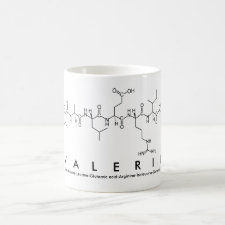
Authors: Pichon V, Combès A
Article Title: Selective tools for the solid-phase extraction of Ochratoxin A from various complex samples: immunosorbents, oligosorbents, and molecularly imprinted polymers.
Publication date: 2016
Journal: Analytical and Bioanalytical Chemistry
Volume: 408
Issue: (25)
Page numbers: 6983-6999.
DOI: 10.1007/s00216-016-9886-0
Abstract: The evolution of instrumentation in terms of separation and detection has allowed a real improvement of the sensitivity and the analysis time. However, the analysis of ultra-traces of toxins such as ochratoxin A (OTA) from complex samples (foodstuffs, biological fluids...) still requires a step of purification and of preconcentration before chromatographic determination. In this context, extraction sorbents leading to a molecular recognition mechanism appear as powerful tools for the selective extraction of OTA and of its structural analogs in order to obtain more reliable and sensitive quantitative analyses of these compounds in complex media. Indeed, immunosorbents and oligosorbents that are based on the use of immobilized antibodies and of aptamers, respectively, and that are specific to OTA allow its selective clean-up from complex samples with high enrichment factors. Similar molecular recognition mechanisms can also be obtained by developing molecularly imprinted polymers, the synthesis of which leads to the formation of cavities that are specific to OTA, thus mimicking the recognition site of the biomolecules. Therefore, the principle, the advantages, the limits of these different types of extraction tools, and their complementary behaviors will be presented. The introduction of these selective tools in miniaturized devices will also be discussed
Template and target information: Review - solid-phase extraction of ochratoxin A
Author keywords: ochratoxin A, antibody, aptamer, molecularly imprinted polymer, Immunosorbent, oligosorbent



Join the Society for Molecular Imprinting

New items RSS feed
Sign-up for e-mail updates:
Choose between receiving an occasional newsletter or more frequent e-mail alerts.
Click here to go to the sign-up page.
Is your name elemental or peptidic? Enter your name and find out by clicking either of the buttons below!
Other products you may like:
 MIPdatabase
MIPdatabase









